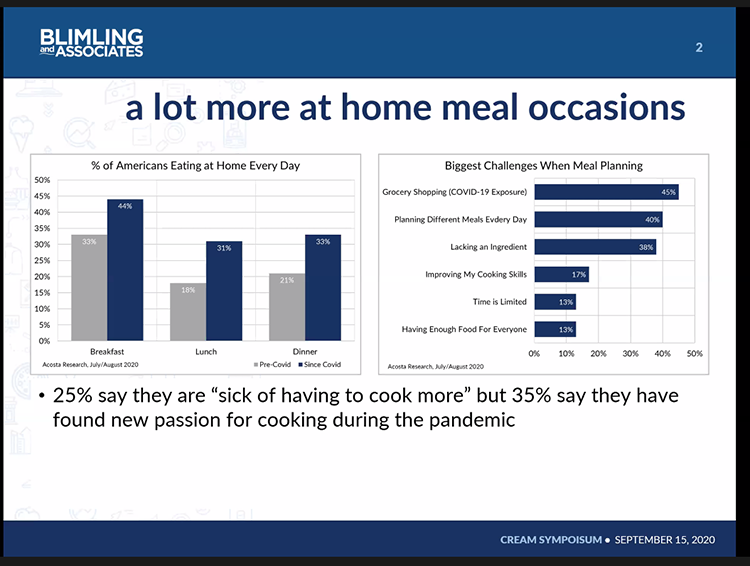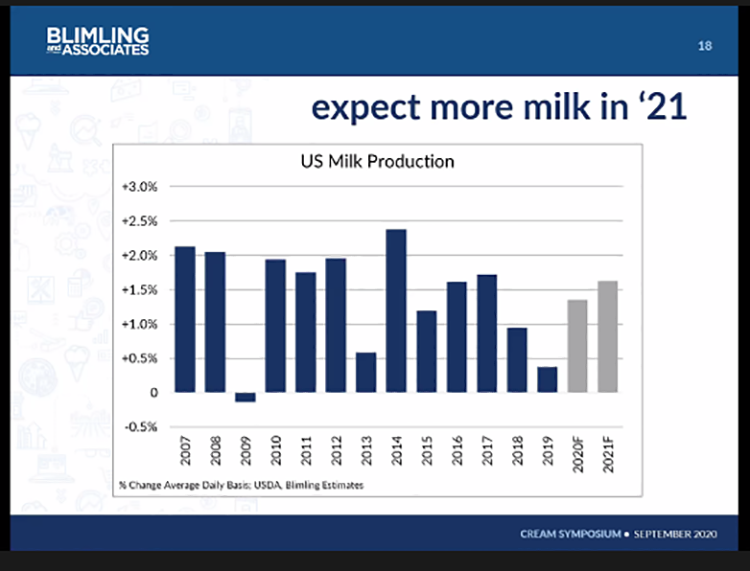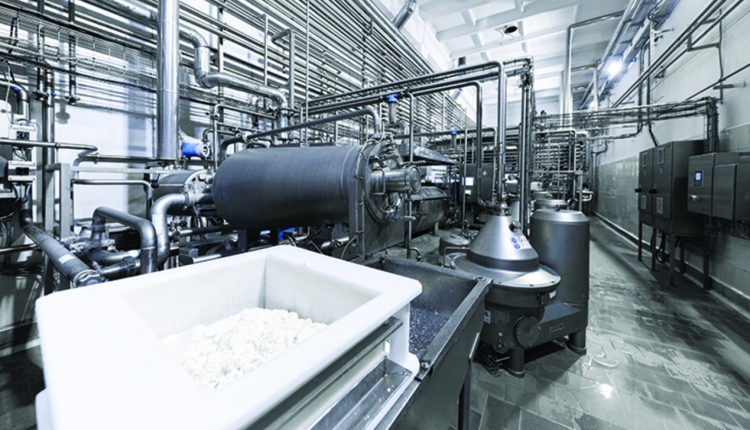
“Dairy perishability will be as important as portability in the months and years ahead,” said Phil Plourd, president of Blimling and Associates Inc. and president of the services division of Dairy.com.
He emphasized that restaurants offering food that people can acquire with mobile technology and take home will be the most successful.
“Don’t bet against the laziness of the American consumer,” he said, explaining the draw of restaurants making it easy to get food curbside or by delivery, plus some people’s disinterest in cooking for themselves. As a result, he stated that dairy needs to be able to compete by expanding portable options.

Consumer behavior has been vastly affected by COVID-19, and since people aren’t dining out or eating at schools, dairy supply and sales have changed. The reduction in people getting together in general affects prices for dairy farmers.
“We’re expecting to see continued softness in butter prices as 2021 unfolds. That’s predicated on plenty of supply out there, and we expect that’s going to continue in the fourth quarter and heading into 2021,” said Kathleen Wolfley during the September 15 webinar “2020 Cream Symposium,” hosted by Blimling and Associates and Dairy.com. “We’re still not seeing a lot of uptake in restaurants. There are not a lot of butter plates being passed around convention halls, and we are unlikely to see that in the next couple of months and into 2021.”
Fortunately, some restaurants have been able to adapt during the pandemic — at least for now.
“The boom in takeout and delivery has helped to bring restaurant dollars and restaurant sales back to life in Q2 and into Q3, and I think the access to patio seating – sometimes even in the right hand turn lane – helped to bring those dollars back. But one thing that’s really quite concerning and could stall some of that growth is that as the weather cools, people are going to move back inside. There’s certainly some concern around how excited folks are going to be to reenter a restaurant,” Wolfley said.
Even though closings and cancellations reduced dairy sales, retail sales of dairy products for home use have expanded, in part due to Americans baking when they’re at home.
“I know in my household, we’ve made a lot of chocolate chip cookies, and a lot of sourdough bread with probably too much butter on it,” Wolfley said. She estimated that the return of cold weather bringing people back into their kitchens to bake, plus kids staying home and looking for activities to do, will cause a bump in butter sales.
Predictions for 2021
The analysts also discussed the future impact of the Glanbia dairy processing plant in Michigan that will take in 8 million pounds of milk a day. Since that’s 25% of Michigan’s milk supply, they estimated it could generate less surplus cream.
“That’s likely going to result in some shifting dynamics in the region,” Wolfley said.

Farmers in the U.S. will continue to grow production through 2021, perhaps as much as 1.6%, estimated analyst Katie Burgess. Though they had to withstand 2020 reduced prices and even in some cases production quotas, the rise will likely occur due to government payments, higher prices, and operation expansions.
The author and her family own and operate a sixth-generation dairy farm near St Johns, Mich.








